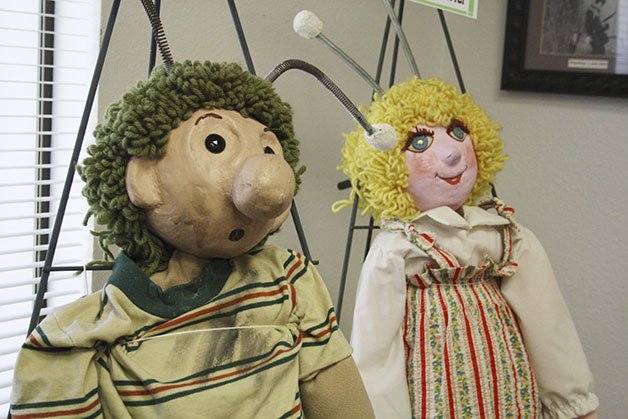Editor’s Note: A quote from this story has been removed pending a fact-checking clarification.
Three shelves.
It’s been almost a year since the Greater Bonney Lake Historical Society acquired a substantial donation of Alfred and Elma Milotte’s personal effects and, in that time, its members have catalogued three shelves worth.
That measurement is nothing to sneeze at. The entirety of the donation takes up a large corner of the old courtroom in the city’s Public Works Center, in a space that’s become sort of a fort made out of metal shelving and banker’s boxes. Inside are two lifetimes worth of photos, correspondence, accounting records and other documents. The home is temporary for now — the materials were previously kept in a spare room of the Justice Center — but the society plans to ask the City Council to make the spot a permanent home, local historian and author Winona Jacobsen said.
Cataloguing the entirety of the collection could take years, she said.
The members are doing it themselves, logging the collection item by item, from morning to early afternoon three days a week. The reward at the end of the road is a fuller picture of one of Bonney Lake’s hidden treasures.
Alfred and Elma Milotte were cinematographers and nature documentarians perhaps best known for their work on Walt Disney’s True Life Adventure series in the 1940s and ‘50s. Indeed, their Internet Movie Database credits only include their work with Disney, a substantial but incomplete representation of their career in film.
“Their contributions to film are not entirely known,” said Society member and volunteer Glenn Carter.
For example, many have seen the 1963 Alfred Hitchcock classic “The Birds,” but few people may realize the seagulls terrorizing Tippi Hedren on Bodega Bay were actually Tacoma natives, filmed by the Milottes at a nearby landfill.
The footage was shot during their semi-retirement, when the couple made their home on a five-acre property that is now part of the Sky Island neighborhood. That house is gone now, but every stage of its construction was photographed and documented.
Now it just has to be organized.
“The Past Perfect software is specifically structured for historical record keeping,” local historian Carter said as he booted the program on the society’s desktop. “So right now we have 239 records in (the program) that we’ve … scanned, given a number and written an excerpt. The nice thing about it is it’s reasonably intuitive.”
The program allows the Historical Society volunteers to attach identifying information to every document in their collection, notably photographs. Fields include people, places and dates.
“Some of these blanks have to stay blank such as people’s identifications,” Carter said. “Like this photo.”
He pulled up a photograph of three people on a boat.
“Here we have a man, a woman and another woman, but we don’t know who they are yet,” he said.
Past Perfect operates on a module system, meaning modules that expand the capabilities of the program are sold separately. The Historical Society has the basic program for now, but is looking at the possibility of expanding. One module in particular would allow multiple users to network on a single project, a function that could expedite the cataloguing process.
That capability could prove useful, as Alfred and Elma left plenty of raw material for the society to work with.
“(Elma) did a wonderful job tracking everything,” Carter said. “Looking at their accounting records for their studio… she documented every cent that came in and went out.
“I can’t prove it, but I have a feeling she was the boss, just judging from the amount of detail.”
In reconstructing the past, the historical society also wants to help the future. As Carter and fellow historian Bonnie Egbert discuss the Milotte accounting records, the conversation turns to the money they left behind. A good portion of said funds went to establish the Alfred G. and Elma M. Milotte Scholarship Fund for wildlife photographers.
“Bank of America holds these funds the Milottes left for this scholarship for students interested in nature photography and film,” Egbert said. “They left it after they died in 1989, and there’s still money today. By raising awareness for this couple, we hope it becomes a big draw for our high school students.”



